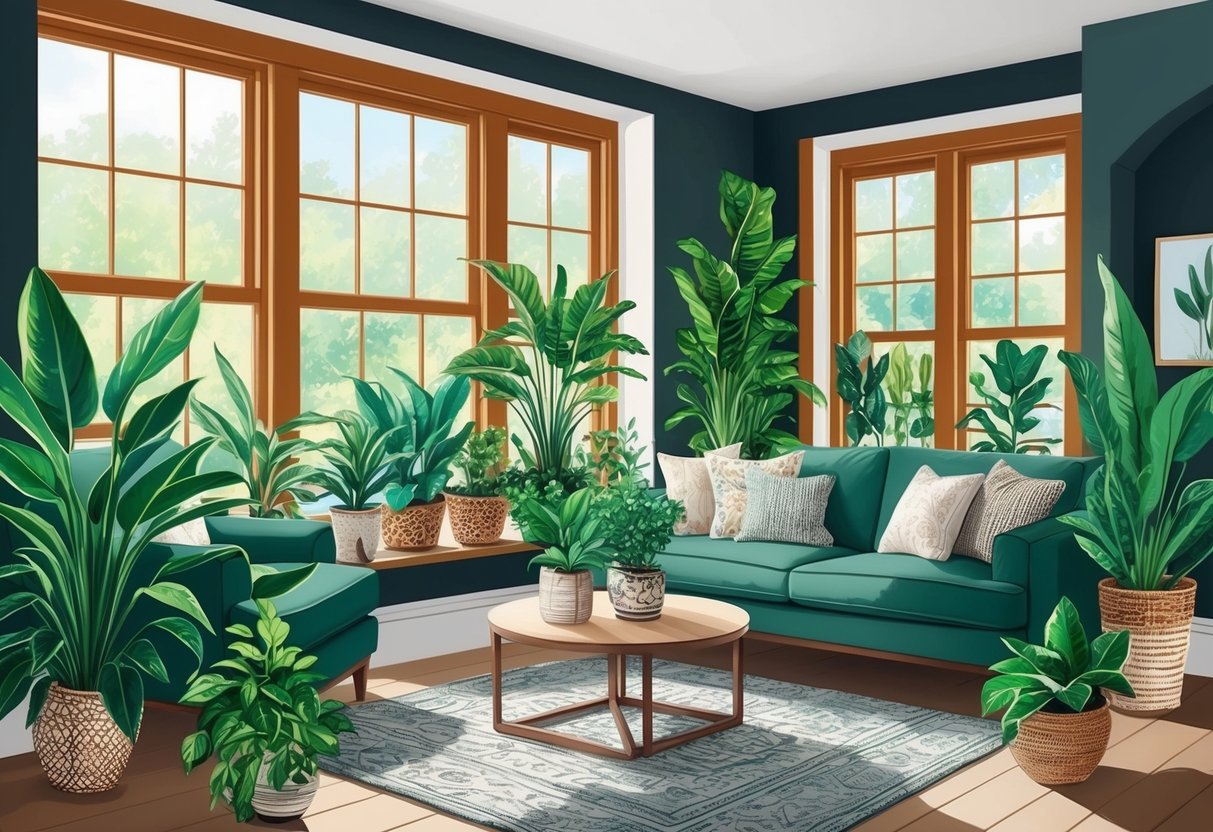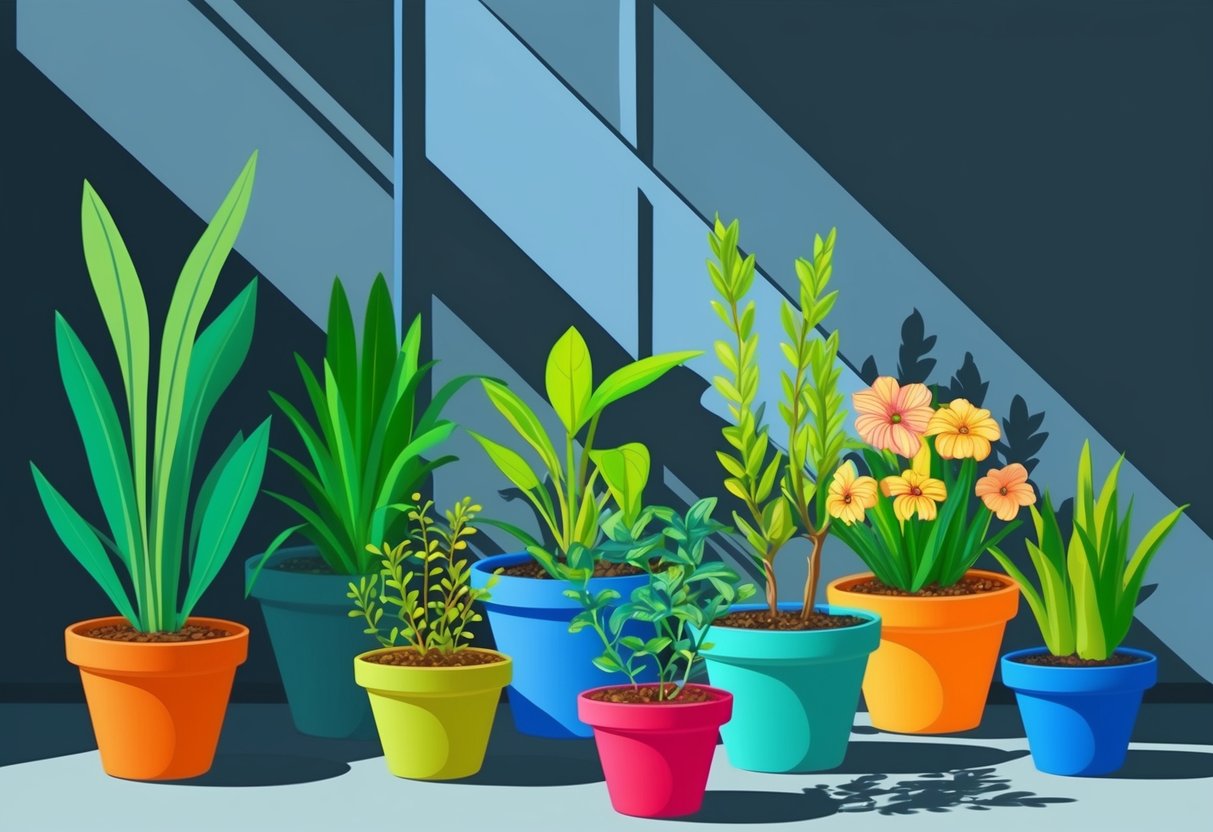
Compact and Colorful Small Plants

Small indoor plants bring vibrant color and unique texture to shaded spaces. They are ideal for desks, shelves, or corners with less natural light.
Some of the best options thrive with minimal sunlight. These plants add visual interest through their foliage patterns and shapes.
Calathea
Calathea is well-known for its dramatic foliage, displaying striking patterns, bold colors, and intricate markings. Leaves often show off shades of green, silver, purple, and even pink.
This plant prefers indirect, low to medium light and appreciates consistent moisture. High humidity helps prevent leaf curling and brown edges.
Bathrooms and kitchens are often ideal spots if natural light is limited but moisture is higher. Calathea varieties such as Calathea ornata and Calathea medallion are especially attractive and popular among indoor gardeners.
Each variety has distinct markings. Their compact size makes them suitable for tabletops or plant stands.
Calathea adds texture with its slightly wavy leaf edges and soft, almost velvety surfaces. Regularly wiping leaves helps keep their patterns vibrant and dust-free.
For more inspiration, review notable low-light options at Better Homes & Gardens.
Peperomia obtusifolia
Peperomia obtusifolia, also known as the baby rubber plant, is a popular houseplant because of its sturdy, glossy leaves and compact growth habit. Its oval-shaped foliage ranges from deep green to variegated mixes of cream and yellow.
This species thrives in low to moderate light and does not demand frequent watering. Its thick, fleshy leaves store moisture, making it tolerant of occasional neglect.
Placement out of direct sunlight helps prevent leaf scorching and preserves its vivid appearance. Texturally, Peperomia obtusifolia offers a smooth, almost waxy feel, and the leaves often display a gentle ripple at the edges.
It is well-suited for small containers, windowsills, or grouped arrangements with other shade-loving plants. This species resists common pests and diseases, increasing its appeal for beginners and experienced indoor gardeners alike.
For more resilient, low-light suggestions, check the options at House Beautiful.
Flowering and Ornamental Shade-Tolerant Houseplants
Certain shade-tolerant indoor plants offer both vibrant color and decorative foliage. These varieties can be featured for their eye-catching leaves or delicate blooms.
Heuchera (Coral Bells)
Heuchera, also called coral bells, is an ornamental perennial known for its remarkable foliage. While often grown outdoors, these plants can adapt to indoor environments with indirect or low light.
Their leaves come in a range of hues including shades of purple, silver, red, and green. Coral bells generally prefer well-draining soil and moderate watering.
They do not require extensive maintenance, making them suitable for those who want attractive but easy-care houseplants. Heuchera may produce delicate, bell-shaped flower spikes in the spring or summer, but their primary appeal indoors lies in their ornamental leaves.
Heuchera also tolerates a variety of humidity levels. Its compact size makes it ideal for tabletops and shelves.
To maintain best color, it is recommended to rotate the plant occasionally and keep it away from direct sun, which can bleach its vibrant leaves.
Astilbe
Astilbe stands out as a shade-loving plant best known for its feathery plumes of flowers and finely-cut foliage. Indoors, astilbe can do well in bright, indirect light but will manage in dimmer spots as long as humidity and moisture are sufficient.
The flower clusters range in color from white to pink, red, and mauve, offering a soft burst of color. For indoor growth, astilbe needs consistently moist soil.
Regular misting or placing a tray of water nearby can benefit its humidity needs. As a shade-tolerant variety, astilbe thrives without harsh sunlight, which can damage its delicate leaves and flowers.
When kept indoors, the ornamental value comes both from its blooms and its foliage, which is often a rich green with a lacy appearance. Astilbe is also valued for adding texture and visual contrast when grouped with other low light houseplants.
For more, see HGTV’s overview of low-light indoor plants.